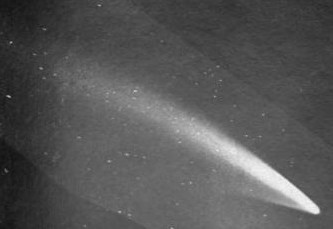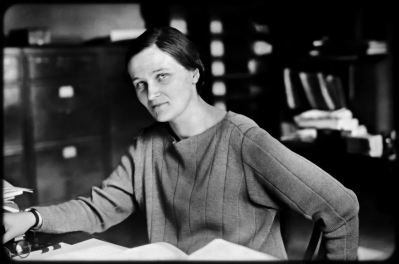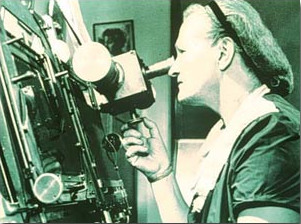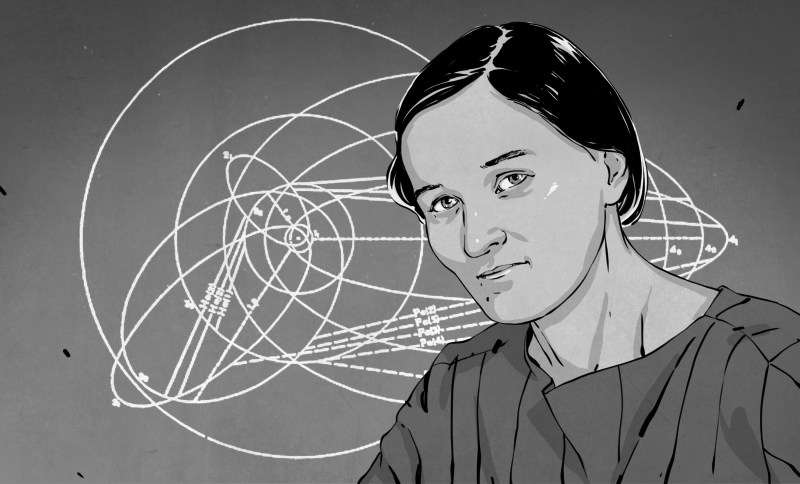We as humans are limited in the ways we can look at things ourselves, and rely on on the different perspectives and insights of others to help make sense of things. All it takes is one person to look at a data set and find something completely different that changes our fundamental perception of the universe.
Cecilia Payne-Gaposchkin discovered that stars are primarily made of hydrogen and helium, at a time when astronomers thought that the Sun and the Earth had no significant elemental differences. She proposed that hydrogen wasn’t only more common, but that it was a million times more common.
This outlandish conclusion was roundly dismissed at the time, and she aquiesced to tone down some of the conclusions in her thesis, until her findings were widely confirmed a few years later. Truly groundbreaking, the discovery of the prevalence of hydrogen in stars paved the way for our current understanding of their role as the furnaces for the heavier elements that we know and love, and indeed are composed of.
Meteorites, Comets, and Bee Orchids
Cecilia Helena Payne was born May 10th, 1900 in Wendover, Buckinghamshire, England. She was one of three children born to Emma and Edward, a lawyer, historian, and musician. Her father died with she was four years old, leaving her mother to raise the family alone.

When she was only a few years old, Cecilia saw a meteorite blazing across the sky and was completely fascinated. She continued to show interest in science after discovering a bee orchid growing in an orchard when she was eight. This was exciting because the bee orchid is native to the Mediterranean and not to England. A few years later, she witnessed both the Great Daylight Comet of 1910 and Halley’s Comet in the same year.
Cecilia’s mother moved them to London when she was twelve for the sake of her brother Humfry’s education. Cecilia’s education focused on languages, but she was more interested in botany and other sciences. She studied botany and math on her own, and one of her teachers took her to museums and lent her books to read.
At 17, Cecilia was finally able to study science. She transferred to St. Paul’s Girls’ School and spent two years there before earning a scholarship to Newnham College at Cambridge University. She majored in botany, physics, and chemistry, but her interest shifted solidly to astronomy after she attended a lecture about solar eclipses and relativity by Sir Arthur Eddington that transformed her world picture.

The Stuff of Stars
Cecilia’s options in the UK were limited to teaching, so she looked for grants that would get her to the States. After graduating Newnham in 1923, she won a National Research Fellowship which she used to pursue graduate studies at Radcliffe, a women’s college associated with Harvard, which was then restricted to men.
Her academic advisor persuaded her to write a doctoral thesis even though there was no astronomy program at Radcliffe or Harvard. The common belief at the time was that the Earth and the Sun were composed of the same elements. By studying tens of thousands of spectroscopic images, Cecilia determined instead that the Sun and other stars are mostly made of hydrogen and helium. She established a stellar temperature scale and accurately related the spectral classes of stars to their temperatures by applying astronomer Meghnad Saha’s ionization theory. Her thesis was published in 1925, and she was granted the first PhD in astronomy from both Harvard University and Radcliffe College.
Several faculty members and astronomers including Henry Norris Russell found her thesis problematic because it was so unorthodox. They went as far as forcing her to add a statement saying that the presence of hydrogen in the Sun was highly unlikely. Within four years, Cecilia’s findings were independently verified by others, including Henry Norris Russell. Ironically, Russell is often credited for this discovery, though he credited Cecilia in his own paper.

Professor Payne-Gasposchkin
After receiving her doctorate, Cecilia studied high-luminosity stars in order to better understand the structure of the Milky Way. In 1933, she met astrophysicist Sergei I. Gaposchkin in Germany. They married the following year and settled in a small town near Harvard, eventually raising three children. Cecilia had become an American citizen in 1931 and helped Sergei obtain his citizenship a few years later.
Cecilia and Sergei worked together to survey all of the stars brighter than the tenth magnitude. Together with Sergei and her assistants, Cecilia made over 3,000,000 observations of variable stars. She published several books, including The Stars of High Luminosity (1930), Variable Stars (1938) and Variable Stars and Galactic Structure (1954). Cecilia retired from teaching in 1966, but continued doing research and editing books and journals that came out of Harvard Observatory. Various people did what they could over the years to elevate her standing at Harvard. She was the first woman promoted to full professor, and the first woman to head a department. She fought for equal pay, but spent much of her teaching career earning the same wage as an entry-level male professor.
Still, Cecilia was influential in many ways. Several of her students such as Helen Sawyer Hogg went on to make their own important contributions to astronomy. When Joan Feynman found Cecilia’s name in an astronomy textbook, it renewed her confidence enough to study science against her mother and grandmother’s wishes.
Cecilia won plenty of awards in her lifetime, and was the first recipient of the Annie Jump Cannon award in astronomy. She died December 7th, 1979 in Cambridge, Massachusetts, but will always be remembered for her huge contribution to science.
Thanks to [Keith Olson] for the tip.















A biography was recently completed of her by Donovan Moore. It’s a riveting account. The title is “What Stars Are Made Of: The Life of Cecilia Payne-Gaposchkin”
I have not read her thesis or other work, so I have no idea what her contributions to the field were beyond the account above, but something’s a little odd here.
Henrietta Swan was also an astronomer at Radcliffe & Harvard, who did the fundamental research and observations on variable stars that Hubble then famously used to compute his eponymous constant. That work required a pretty deep understanding of stellar classes and composition. The kicker: She completed all that work and was dead before Cecelia P-G even arrived at Radcliffe.
And the composition of the sun was well known before this time. Heck, Helium was even DISCOVERED on the sun a full half century earlier. The density of the sun is also a quarter that of earth, and thus it’s known to be impossible “that the Earth and the Sun were composed of the same elements.”
I think something got mangled in the dumbing down of the story for the great unwashed here…
It’s not about the presence of the elements, it’s about their relative abundances. The original assumption was that the makeup of the universe was roughly similar to what was directly measured on Earth, but the emission spectra told a very different story.
So either Earth is markedly different to the observed universe, or emission spectra aren’t a valid way of measuring composition. Payne-Gaposchkin used quantum mechanics to prove that the spectra were accurate after all.
Please do continue with more articles about the women in science. And please do not stop!
The Glass Universe by Dava Sobel is a history of Women at Harvard Observatory. Ms. Payne-Gaposchkin was one the women featured. Anyone interested in history of astronomy should read this book.
Cecilia Payne-Gaposchkin , more than any of the pioneers of stellar atmospheres, should probably be considered the mother of stellar atmospheres. She is an idol of mine. However, the quality of her analysis at the end of her Ph.D. Thesis has swollen with the retelling. It was a fairly modest part of her thesis and that part is not very clear science, at best. Its position and emphasis in the thesis may have been because of the critical comments it had received before it was finished. However that doesn’t explain the quality of that part. Her life story is astounding and well worth reading about. The first biography was put together by her daughter, including some scientific and personal recollections and her autobiography.